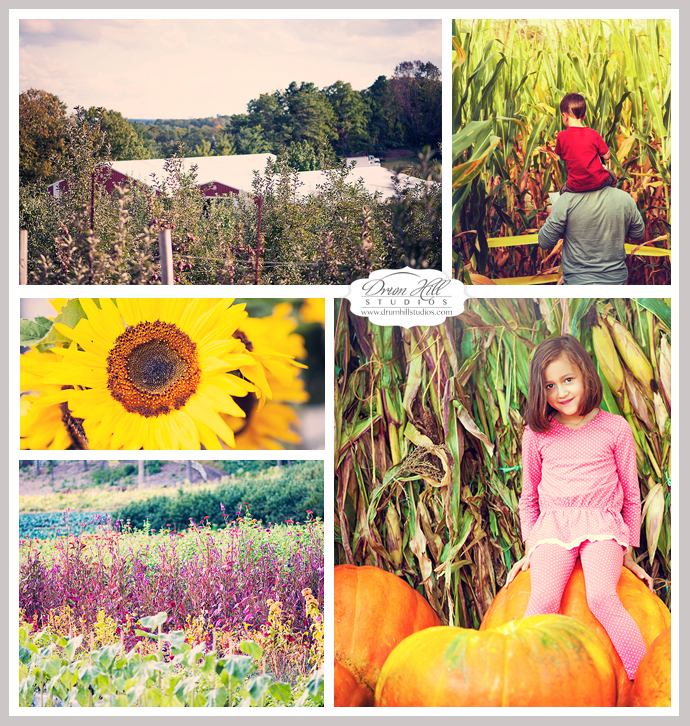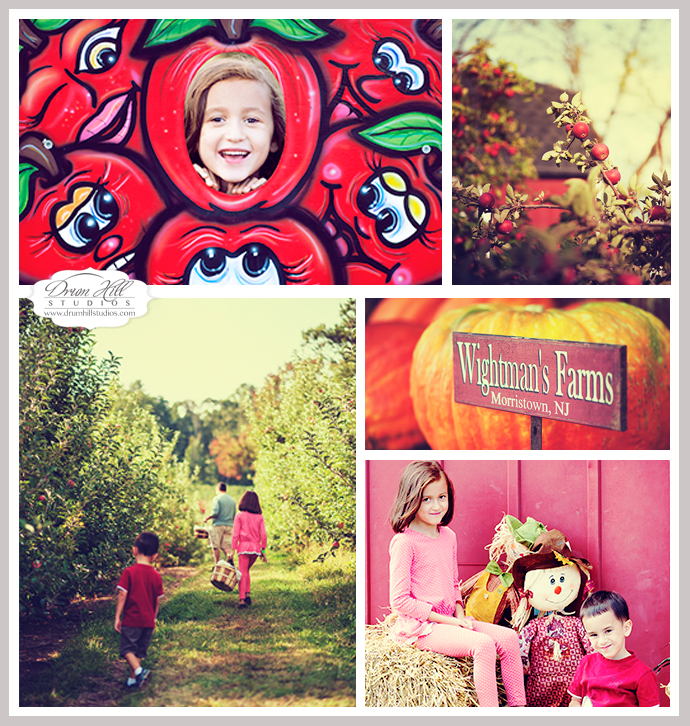My family and I traveled to Wightman’s Farms in Morristown to do some apple picking this past weekend. If you haven’t already been there, pack up the kids and check it out! It’s very quaint and there’s lots for the little ones to do. Our trip inspired me to write a blog about photo composition. Just a few tips to think about next time you’re out shooting a family outing. And to those of you who always take the photos, don’t forget to put yourself in a shot once in a while. This is something I am guilty of. Remember, it is just as important to document your life as it is to document your children’s.
1) IT’S ALL IN THE DETAILS. Whether you’re photographing an event or a family outing, look beyond the big picture. Photograph the bow in your daughters hair, the wrapping of a gift, the table setting. Details complete the story.
2) FILL THE FRAME. While it can be appropriate to take shots that put a person in context with the environment that they are in, if they get lost in the picture you might as well just take a shot of the scene and leave them out of it. Get rid of the clutter by zooming in close. These days most point-and-shoot cameras have an optical zoom. Use it!
3) DON’T JUST STAND THERE, DO SOMETHING! Posed shots have their place, but action tells the story. Action doesn’t have to be dramatic. It can be as small as a hug or a child blowing out the candles on a birthday cake.
4) PERSPECTIVE. Try different points-of-view when shooting. Shoot from a bird’s eye point-of-view (from above, looking down) or worm’s eye point-of-view (from below, looking up) to add visual interest. Bird’s eye is more flattering for portraits. Get above your subject and have him/her look up at you. Note: don’t try this in the midday sun or you will get squinty eyes and a very pained expression. 🙂
5) SHOOT OFF CENTER. In other words, do not place your main subject dead center. Imagine a grid laid out on top of your image, dividing your photo in thirds horizontally and vertically. Position important objects at the intersections of the lines. Studies have shown that people’s eyes usually go to one of the intersection points most naturally rather than the center of the shot. For landscapes, this usually means having the horizon align with the upper or lower third of the image. For subjects, this usually means photographing them to either side of the photo. This can make landscape compositions much more dynamic, and give subjects a sense of direction.


